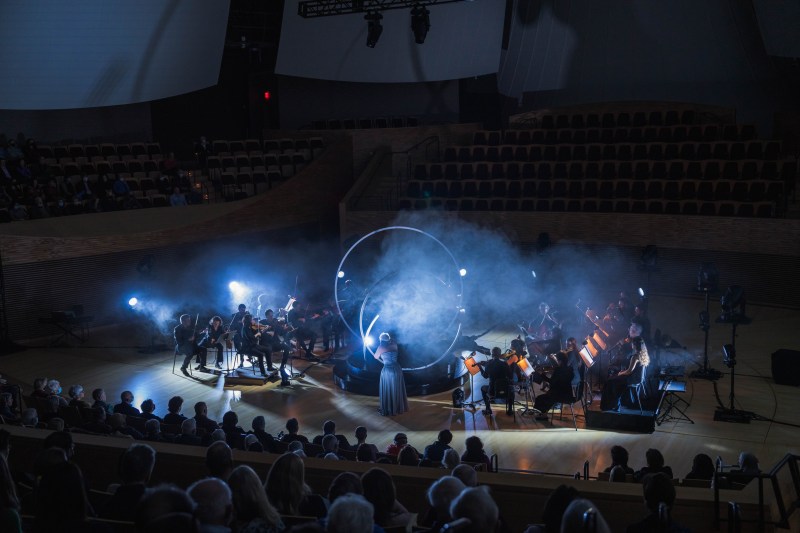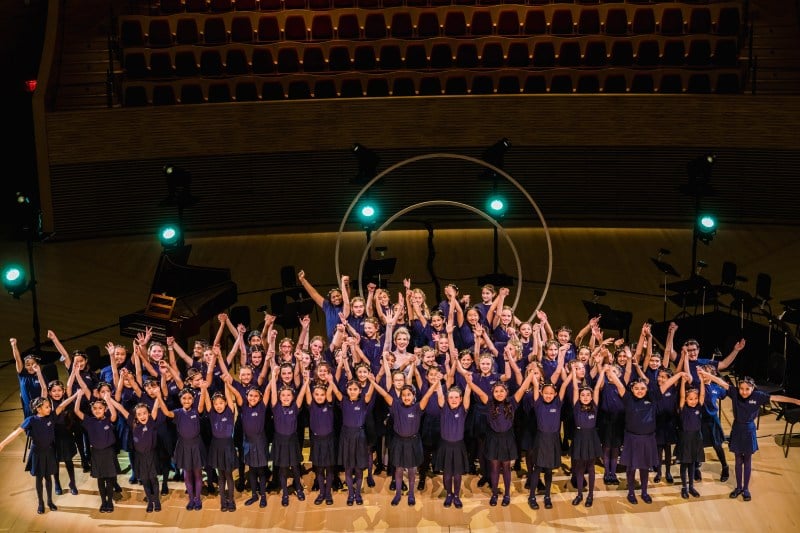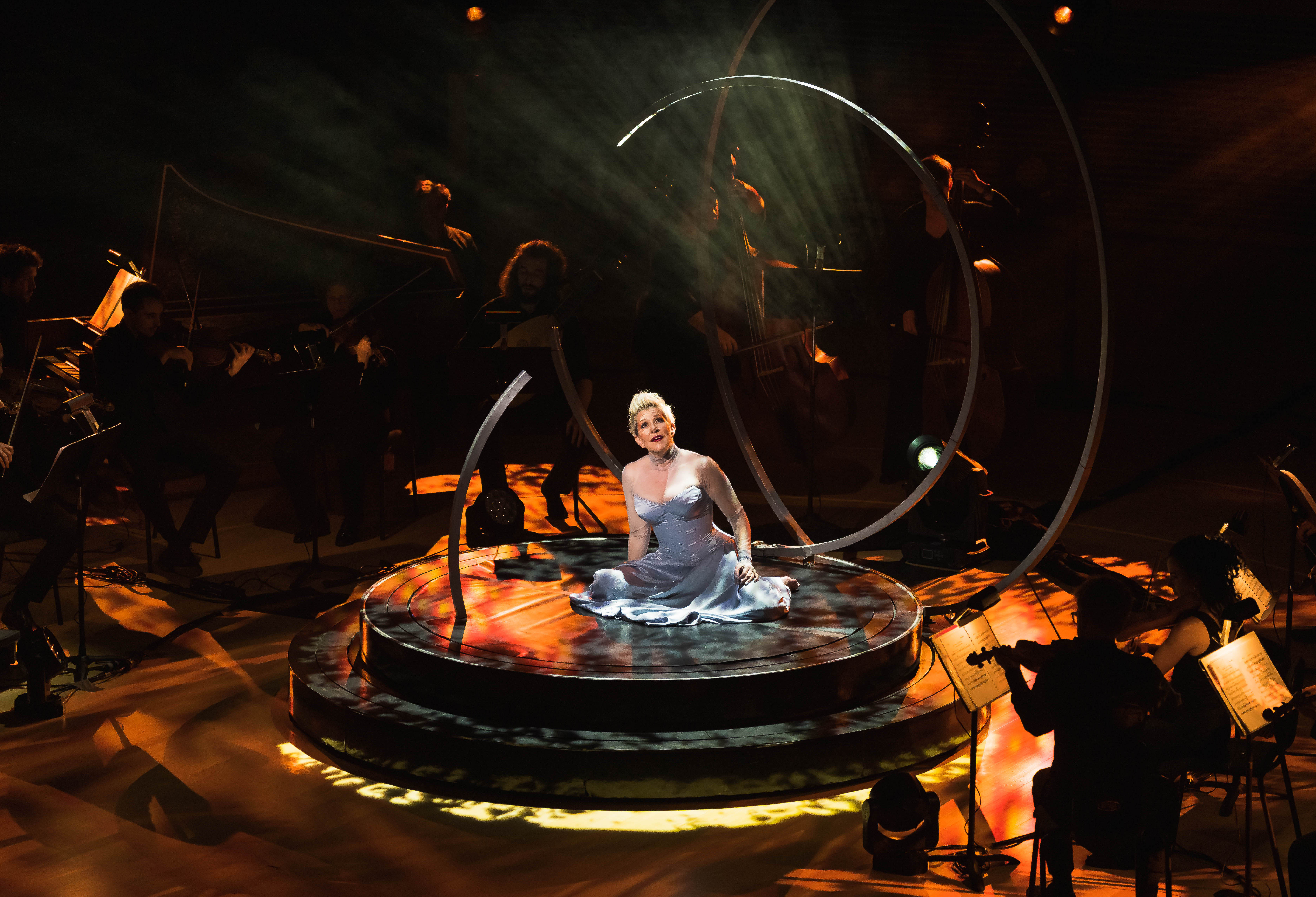This weekend, multi-Grammy award winner and 2018 Olivier Award recipient Joyce DiDonato brought her theatrical and colorfully imaginative opera to Bing Concert Hall. A mezzo-soprano singer, DiDonato is known for her staging of 18th and 19th century operatic music to modern technical designs. Eden is not only her most recent release but also a global tour and education program with local music students at each touring location.
Overall, I thought the opera’s unique use of the space was its most enticing and exciting aspect; her decisions, from projections on the ceiling to the stage layout to choreography limiting itself to a single platform with only a few moments off the stage, were visually pleasing and sustained the tension of the story’s arc to keep audiences engaged. However, as someone who does not consume much opera or classical music, I definitely needed her notes at the end to fully understand the show and its connection to our current world, which ultimately enhanced my appreciation.
The arrangement of the stage and blocking of the opera’s story were major areas of innovation in Friday’s performance. Rather than the traditional theater with a proscenium stage, the performance group sat in the middle of the Bing floor. Most of DiDonato’s movements were circumscribed by the restraints of a round platform. The orchestra arched around her on both sides of the stage. While all eyes were on DiDonato, this enveloped environment created an immersive atmosphere.

While the music was harder to follow along to, mainly due to the style of singing and my lack of familiarity with classical music (only sometimes were there closed captions projected on the wall behind DiDonato), the story of the opera was easier to gather. (Only later, the thematic elements made more sense.) At the beginning of the work, DiDonato gathered metal pieces for two circular structures, which connected to the platform stage and moved along the perimeter of each level. When DiDonato’s character fails to connect the last piece of one structure, chaos ensues both physically (at one point, she collapses on the floor) and musically. When peace does arrive, DiDonato physically embodies the ability to connect via completing the structure and adding the last piece.
The performance celebrated nature — specifically, the interconnectedness of communities via the natural world. This theme was reflected in colorful projections of flora and fauna that embellished the hall’s high ceilings. In line with this theme, DiDonato joyfully greeted the audience by noting the “beautiful weather that arrived for me,” showing her appreciation for the present moment and the fact that the recent onslaught of rain has stopped.
DiDonato said the idea of the theme for the show — “creation through nature” — was derived from a quote from playwright and musician Jonathan Larson: “the opposite of war is not peace, it’s creation.” As we return after COVID has ravaged our world, DiDonato not only uses her performance of baroque and contemporary works to comment on coming back together (via the progression of the opera in completing the metaphorical circle structures), but she encourages the audience to take up some of the load. The musician wants us to look at how we can join each other in challenging the systems in our world and making art to inspire hope.
As for educational programming, DiDonato and her team partnered with the Bay Area choir group iSing Silicon Valley. After holding a workshop for the group earlier in the week, she invited the students to come on stage to perform an encore. Together they sang two songs written by children of the Canterbury Choir in the United Kingdom: “Seeds of Hope” and “Grow a Little Tree.” After the show, audience members were sent off with chamomile flowers to plant to bring the opera’s message out into the world, beyond the performance space.

Editor’s Note: This article is a review and includes subjective thoughts, opinions and critiques.
